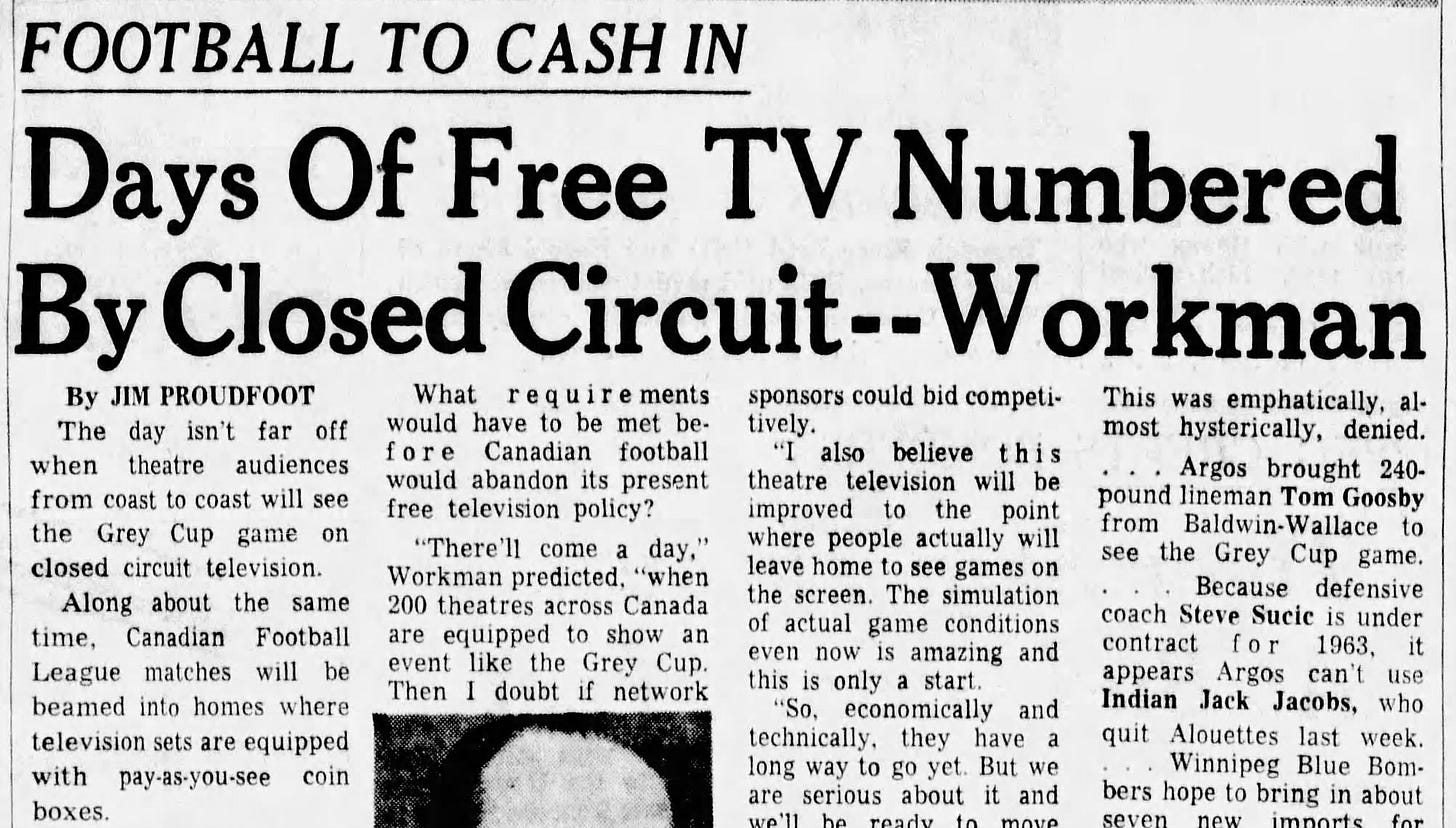Football and Early Pay-Per-View Television
Week 16 of the 2023 NFL season included the first exclusive streaming of the Sunday night game on Peacock. Showing NFL games exclusively on a channel not contained in the standard cable package is a sign of the future and the past. Maybe.
For most of football's history, the primary revenue source was the gate or ticket revenues from those sitting in the seats at the game. The problem with that model was that the combination of ticket prices and the number of seats in the stadium capped revenues. When radio first came along, colleges commonly banned the broadcasting of games due to concern that people would stay home to listen to the game rather than spend the time and money to attend in person. They soon relented, and radio broadcasts became a fixture of the sports world.
The same occurred with television until the revenues grew large enough to outweigh potential losses at the gate. Given this concern, the NFL teams blacked out games in the local market, even sold-out games. The blackout meant that television stations could not show an NFL game if the station's signal came within 75 miles of the stadium hosting the game. The blackouts boosted revenues of hotels and bars situated 75 miles from the stadium as hometown fans without tickets to big games drove to those locations to watch games on television. (The first seven Super Bowls were blacked out in the host cities despite local teams not playing in the games.)
Another technology many thought might overtake broadcast television was pay per view (PPV). Rather than having companies pay the networks to broadcast games in exchange for inserting commercials into the broadcasts, consumers could pay to watch games at home, in a local theater, or at a large conference center. Thomas F. O'Neill, president of RKO Teleradio Pictures, argued in 1957 that PPV was coming for significant events like the World Series. Referencing people paying $3 to $7.50 to watch a recent championship fight shown in movie theaters, O'Neill argued:
...if the same championship fight had been telecast into home TV sets for a fee, it's probable it would have sold for one dollar per set, or at the very most, $2. And there would have been no limit to the number of folks who could crowd into a living room to take advantage of the $1 or $2 admission.
'O'Brian, Jack, Pay TV Favored By Major Broadcaster,' Muncie Evening Press, November 16, 1957.
In theory, PPV from home was the most attractive model, but the challenge was collecting payment for home PPV. Ted Workman, a CFL team owner and onetime interim commissioner, foresaw in 1962 that the CFL would move to home PPV with customers paying by coin. How the television companies hoped to collect all the pre-loonie and toonie coins is anyone's guess, but someone might have figured out a process in the days when credit cards remained uncommon and lacked magnetic strips.

Excitement about PPV led the NFL to announce in October 1963 that teams could experiment with showing blacked-out home games via PPV during the 1964 and 1965 seasons. The experiments would be theater-based rather than home-based, mainly due to the payment challenges.
More immediate and exciting was the plan to show the 1963 NFL championship game on PPV. The game was scheduled for December 29 at the Western Conference winner's home field, two weeks after the season finale, and ended up in Chicago. George Halas asked permission to shift the game from Wrigley Field to the much larger Soldier Field, but the NFL denied the request. Instead, the Bears set up PPV locations at McCormick Place, International Amphitheater, and Chicago Coliseum to accommodate the additional demand.
While 45,801 fans watched the game in temperatures under 10 °F, crowds totaling 25,500 watched at the three heated PPV locations, leaving league, network, and press officials convinced that PPV would play a significant role in future sports broadcasting.
That, of course, did not happen. Instead, broadcast and cable networks have dominated the televising of significant sports until now. That may change since all the mechanisms are in place to offer the World Series, Super Bowl, and other top events in a PPV or app-based format. We will see where it goes, but as they say: "Past performance is no guarantee of future results".
Football Archaeology is reader-supported. Click here to buy one of my books or otherwise support the site.





The more things change the more they stay the same.